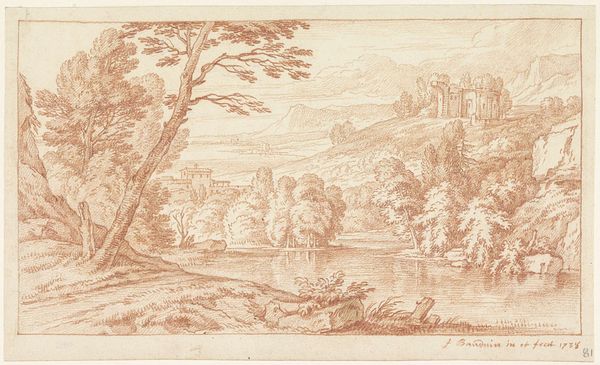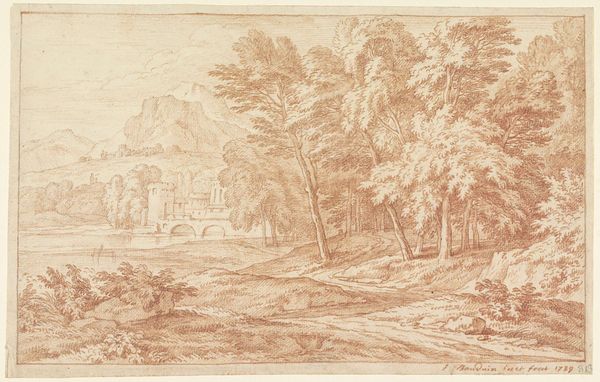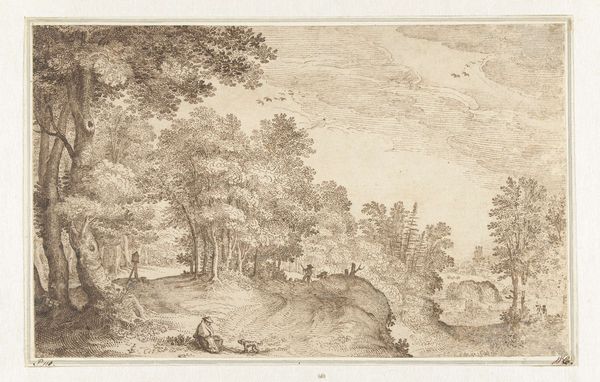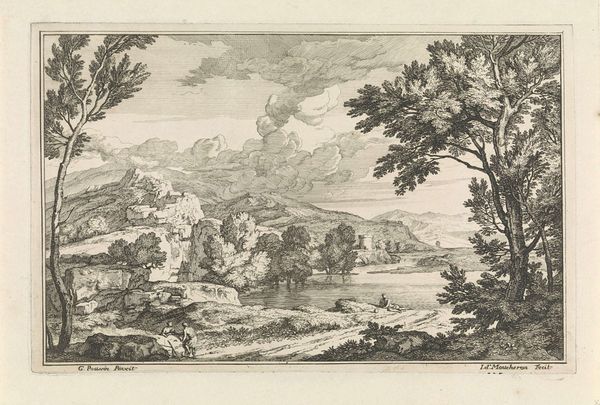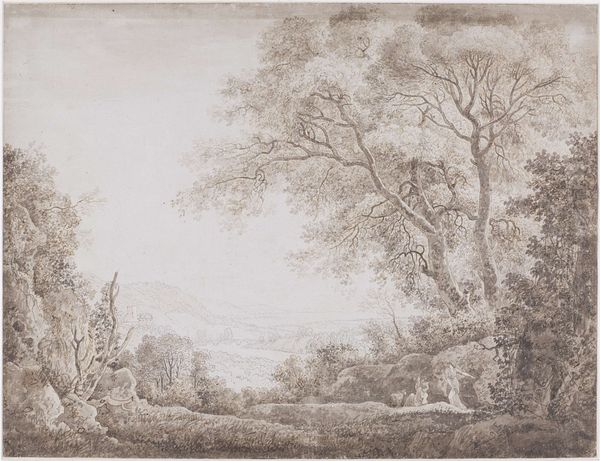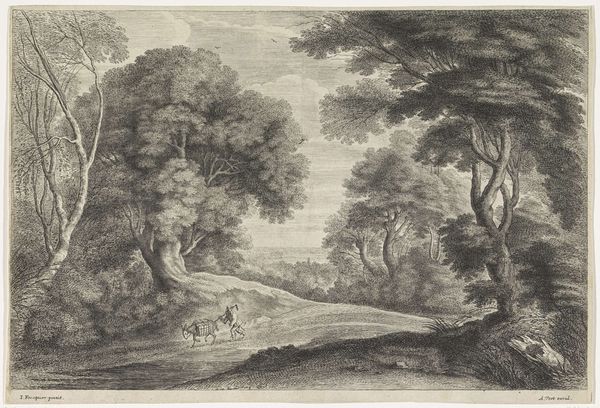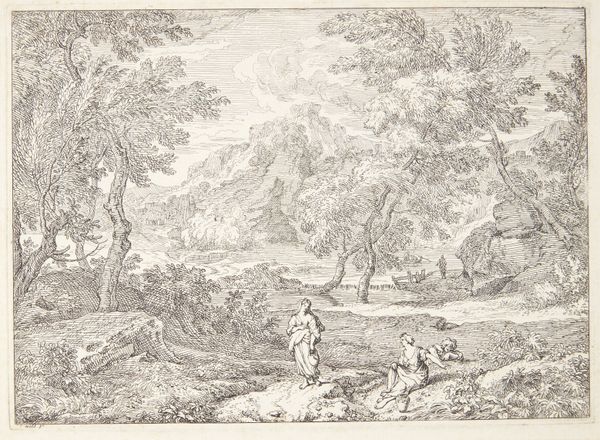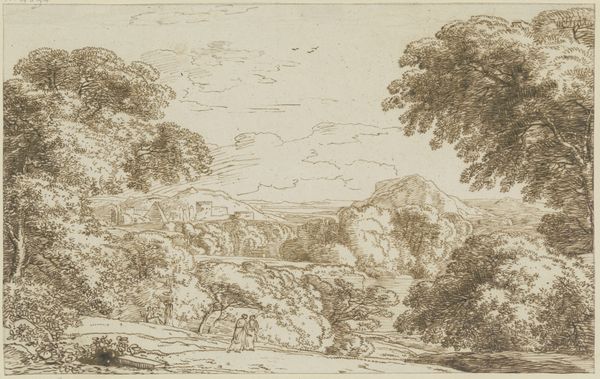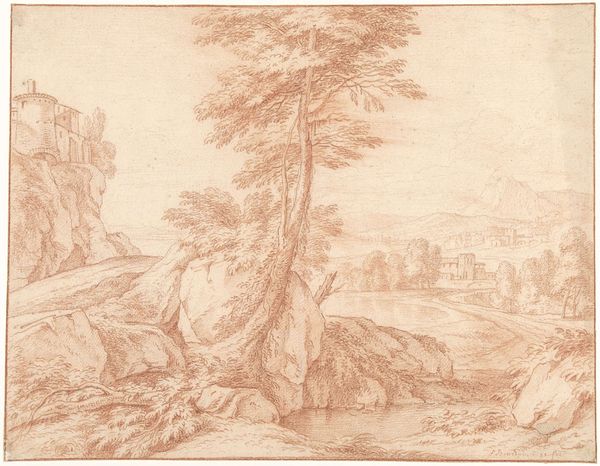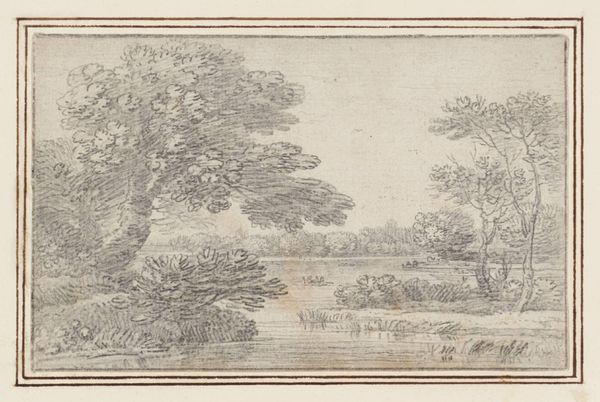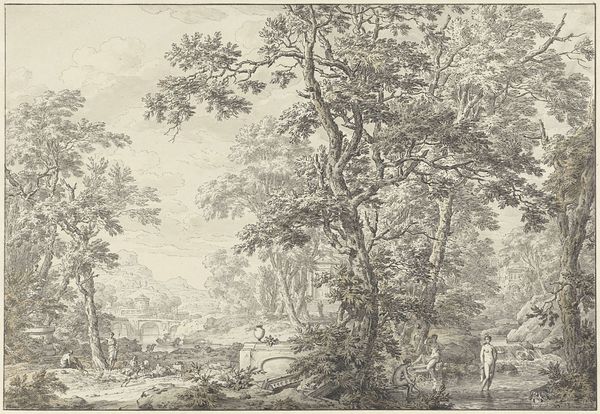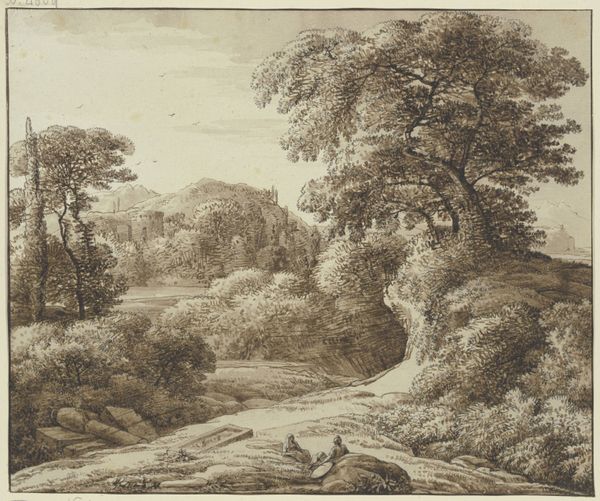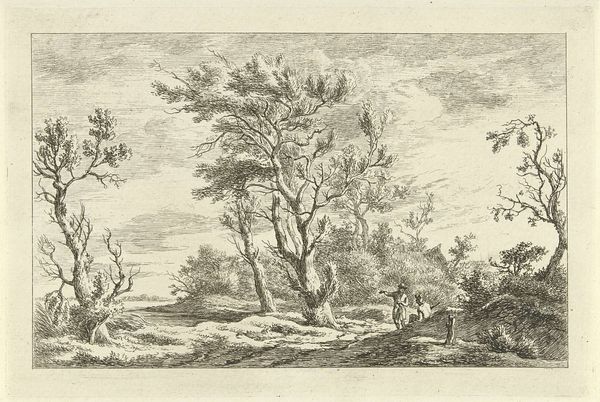
Dimensions: height 181 mm, width 297 mm
Copyright: Rijks Museum: Open Domain
Editor: So, this is Frans Boudewijns's "Landscape with a Country Road to the Right," created around 1740. It’s a charcoal drawing, and the romantic style gives it a really calm, almost dreamlike quality. What stands out to you when you look at it? Curator: Immediately, I’m struck by the road. The winding path beckons, doesn’t it? Roads, paths, and journeys are potent symbols throughout history. Think about the spiritual journey, the "road of life," or even the Roman roads symbolizing empire and connection. Does this resonate with your reading of the piece? Editor: Absolutely! The road definitely suggests a journey. And with the atmospheric perspective, the destination feels so far off, almost like a hopeful dream. Curator: The atmospheric perspective is key, and notice how the road’s color mirrors the hazy distance. Do you feel the artist consciously linked the human desire for movement with the allure of the unknown using colour as a tool? And consider this choice of romanticism during a period steeped in Enlightenment ideals—does it suggest a yearning for something beyond reason and order? Editor: That’s fascinating. The artist isn't just depicting a landscape, but also maybe hinting at a cultural or personal longing. I hadn't considered the Enlightenment context before. Curator: Exactly. Look for those tensions, those subtle visual cues. What other symbolic elements catch your eye? Editor: I think the placement of the large tree on the left may create a frame for the viewer into the scenery. It has an active position compared to the gentle distant landscape, creating balance but also maybe a contrast between an anchored position to venture from. Curator: Beautifully observed! Framing creates meaning, guiding our gaze and shaping our understanding. So, what do you make of the experience overall now? Editor: I see this work not just as a pretty scene, but as an invitation to consider our own paths, our own yearnings for something beyond the horizon. Curator: Precisely! By understanding these visual symbols and their historical context, we gain deeper insights into the artist's intentions and our own cultural landscape.
Comments
No comments
Be the first to comment and join the conversation on the ultimate creative platform.
